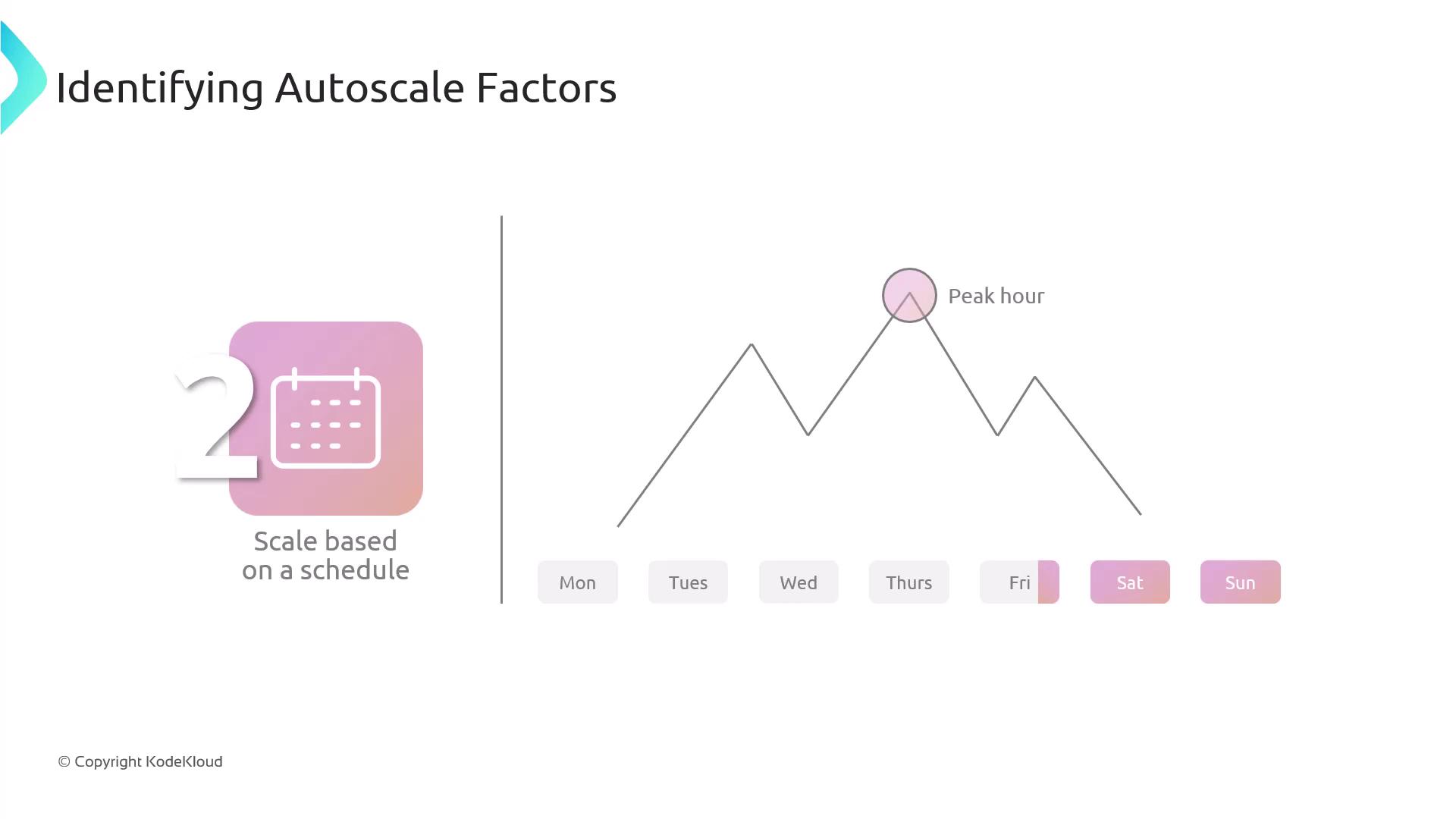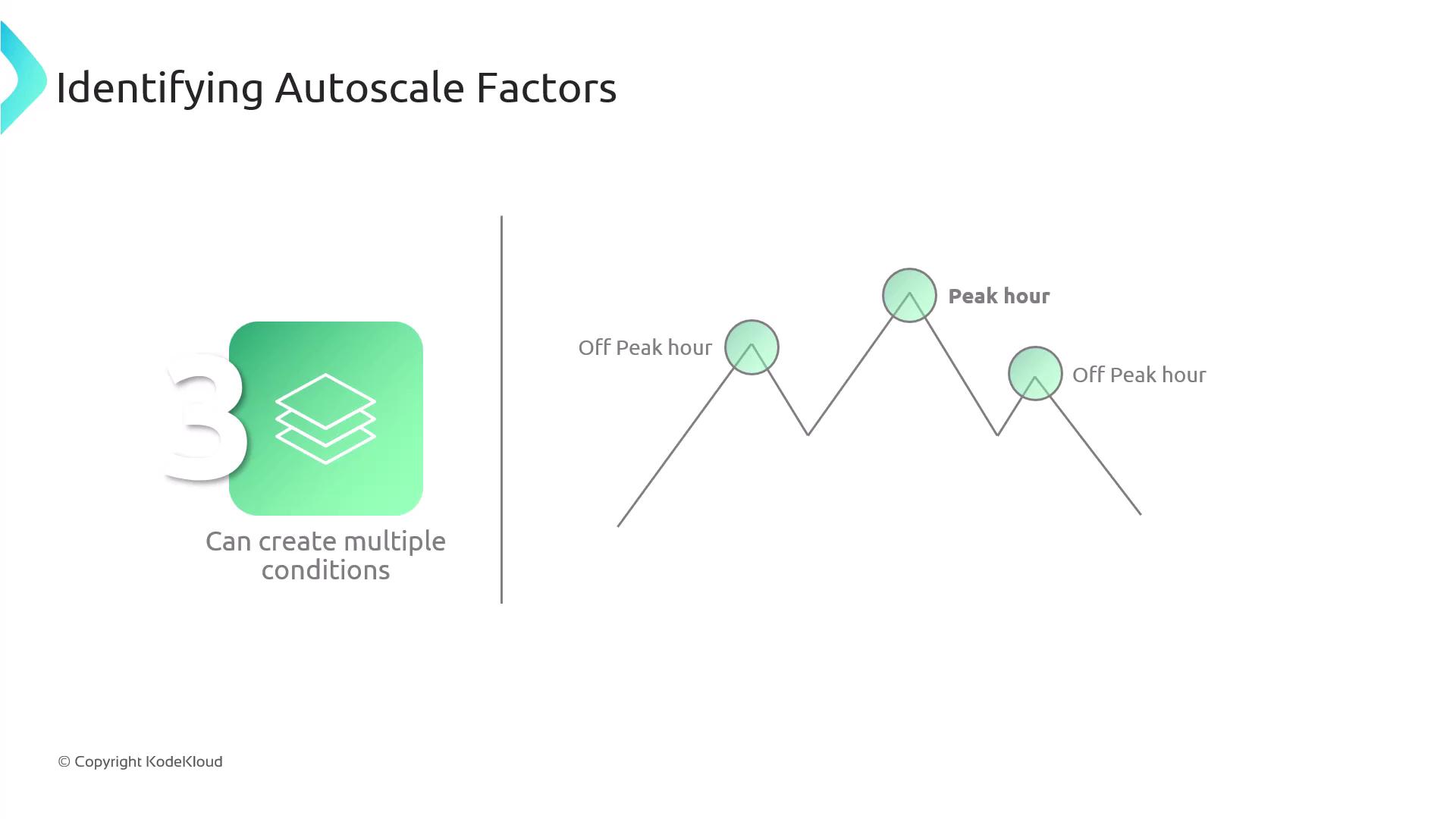AZ-204: Developing Solutions for Microsoft Azure
Scaling Apps in Azure App Service
Identifying Autoscale Factors
In this lesson, we explore the essential factors that drive auto-scaling decisions in Azure App Service. By understanding these factors, you can design an auto-scaling strategy that optimally balances application performance and cost-efficiency.
Performance Metrics-Based Scaling
The primary consideration in auto-scaling is performance metrics. Azure App Service monitors crucial metrics such as CPU usage, memory consumption, and disk queue length. For instance, you may set up a rule to automatically add more instances when CPU usage consistently exceeds 75%.

By dynamically adjusting resources based on real-time metrics, your application can swiftly accommodate increased demand without sacrificing performance.
Similarly, when the demand decreases—say, when CPU usage falls below 25%—another rule can trigger the reduction of instances. This ensures that system performance remains high while keeping operational costs in check.
Schedule-Based Scaling
In addition to metrics-based rules, schedule-based scaling is a strategic method when you know in advance when peak traffic is likely. For example, if your e-commerce website experiences higher traffic on weekends, you can configure auto-scaling to preemptively add resources before the surge.

A typical configuration might scale out instances on Friday evening and scale them back in on Sunday night. This proactive approach reduces the reliance on reactive, metrics-only triggers and ensures that your application remains responsive during peak periods.
Tip
For optimal results, consider combining metrics-based and schedule-based scaling rules. This layered approach allows you to fine-tune your scaling strategy, ensuring maximum flexibility and control during varying demand levels.
Combining Strategies for Complex Auto-Scaling Scenarios
A robust auto-scaling strategy often involves layering multiple rules. By integrating both performance metrics and scheduling, you can handle complex scaling needs. For example, you might apply CPU usage rules during off-peak hours and switch to schedule-based triggers during known high-traffic periods.

This layered strategy ensures that your application consistently remains responsive while optimizing resource usage.
Auto-Scaling Metrics Overview
Azure App Service provides an extensive range of metrics that support effective auto-scaling across all application instances. Key metrics include:
| Metric Type | Description |
|---|---|
| CPU Percentage | Monitors processor utilization |
| Memory Percentage | Tracks memory consumption |
| Disk Queue Length | Measures disk I/O performance |
| HTTP Queue Length | Evaluates the HTTP request queue |
| Data In/Out | Monitors the volume of data transfer |
These metrics enable you to fine-tune your auto-scaling configuration, ensuring that your service adjusts dynamically to real-world usage patterns.
![]()
Next Steps: Configuring Auto-Scaling in Azure App Service
With a clear understanding of the factors behind effective auto-scaling, the next step is to configure the scaling rules within your Azure App Service. These settings allow you to enforce the thresholds and schedules discussed above, ensuring that your application remains balanced between performance and cost.
For more details on setting up these rules, refer to the Azure documentation and explore the configuration panels within your Azure portal.
Additional Resources
For deeper insights into auto-scaling and Azure App Service configurations, consider visiting the Azure Documentation and exploring related tutorials.
Watch Video
Watch video content